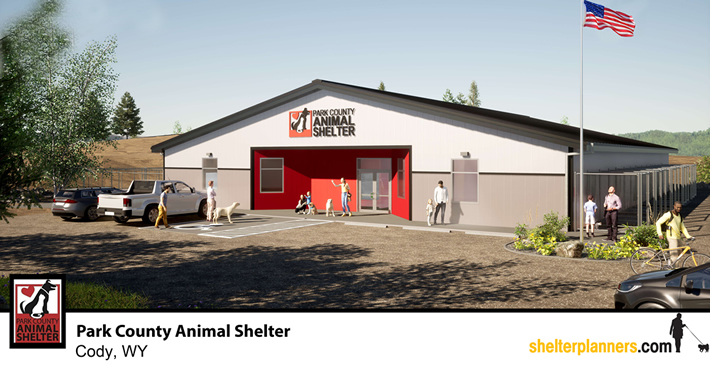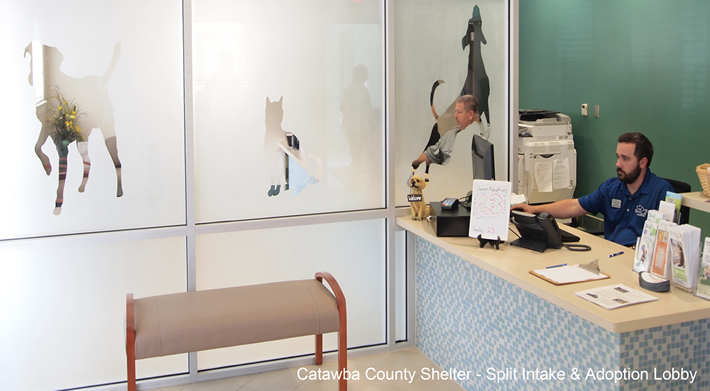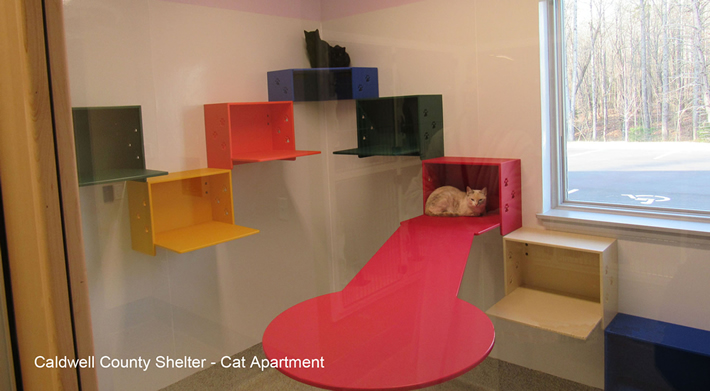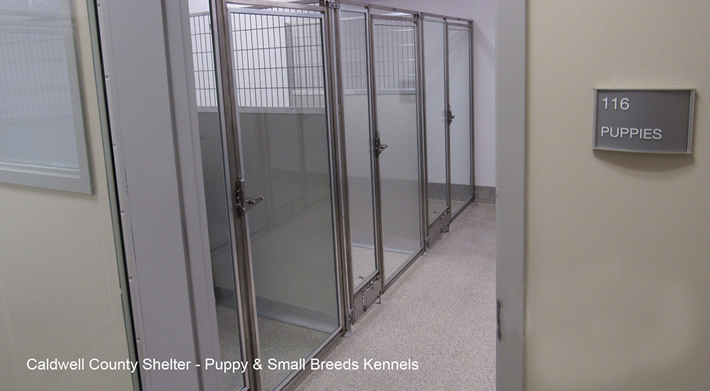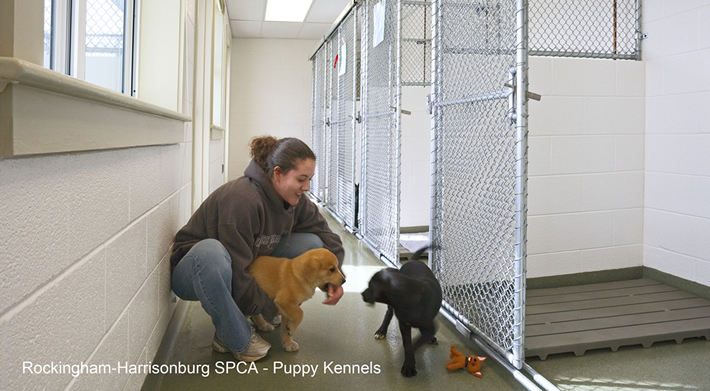 April 21, 2023
April 21, 2023 Animal Shelter Blog
Entries by Shelterplanners (25)
 April 21, 2023
April 21, 2023  April 3, 2023
April 3, 2023 How much would it cost to build an animal shelter?
Building an animal shelter is a noble exercise of love and compassion towards the animals that need our care and protection. Animal shelters are responsible for giving food, shelter, and medical attention to animals that have no one to turn to. This kind of work requires a great deal of professional planning, dedication and funding. At shelterplanners.com, we aim to provide you with the best possible start to your animal shelter project. Today we want to discuss how much it would cost to build an animal shelter and everything you should know before starting your construction project.
To begin, the cost to build an animal shelter varies greatly depending on different factors, and therefore it is challenging to come up with a one-size-fits-all price for this project. The cost will depend on many factors, such as the size of the shelter, the materials used, the location of the facility, State & Local regulations and requirements, and the services you intend to provide. In our experience, the cost range for building a 1,500 square foot animal shelter is currently between $600,000 and $825,000 , depending on the various factors mentioned earlier. Therefore, the cost estimation discussions must be done with professional architects, engineers, and general contractors, who will be able to provide you with detailed cost estimates for your animal shelter based on your specific needs.
One of the significant considerations in building an animal shelter is location. The location of the shelter has a significant impact on the cost of construction. A shelter located in an urban area will likely cost more to build than one situated in a rural or suburban area due to the high cost of land acquisition and construction materials in metropolitan areas. Additionally, the zoning requirements for these animal shelters can vary considerably depending on the city or county. That’s why it is crucial to work with a professional team of consultants to guide you through the local ordinances and zoning requirements before beginning any construction.
Another critical cost factor is the size of the animal shelter. A shelter with a larger capacity requires a more significant investment when it comes to resources such as land, construction materials, and labor. Additionally, a bigger animal shelter means that you will have to provide more food, medical supplies, and personal care services for the animals it houses. It is essential to know that the final cost of constructing a shelter is dependent on the size and physical location of the facility, as well as the types of animals that need lodging.
The type of animals the shelter will care for is also an essential consideration when estimating the cost of building. Different animals have various requirements that need to be addressed in shelter construction. For instance, cats require specific space requirements and environmental enrichment materials to reduce stress, whereas dogs need out-of-shelter play areas, ventilation and sound insulation to help reduce noise disturbances. Some animals require cages, while others don’t, and the size of these cages also vary depending on the animal welfare standards. A shelter aiming to care for livestock will require a much larger budget, but the cost of building also depends on the budget you have set for the project, and the variety of animals for which you plan to shelter, care, and find homes.
It is also essential to consider the level of staffing that the shelter will require. Employing a team of veterinary doctors, animal care specialists, and volunteers is necessary to ensure that the animals have proper care and attention. However, if the shelter is looking to provide facilities, such as education training, workshops or veterinary services, additional staff may need to be hired, as well as expenses for equipment and supplies.
Finally, in addition to construction costs, a properly operating animal shelter must plan for the ongoing cost of caring for the animals. These costs include the buying and transporting of food and medical supplies and utilities such as water, electricity and other associated expenses. The shelter must also plan for the cost of marketing, fundraising, and other administrative costs in order to sustain the organization while providing a safe haven for animals.
In conclusion, building an animal shelter is a considerable undertaking that requires considerable thought and planning. It is essential to work with consultants and professionals to achieve the best possible outcome for your project. At shelterplanners.com, we understand the complexities and unique requirements in starting an animal shelter, and we are here to assist you from the first stage of planning to the final construction process. When you choose to work with us, you are guaranteed of expert advice and assistance in identifying your animal shelter needs, developing the best plan for your new shelter, and finally helping with the property selection, financing and construction. We believe that every animal deserves love and support, and we are glad to assist you in making that a reality. Contact us today, and let us guide you in building a shelter that will serve as a safe haven for animals for years to come.
 April 3, 2023
April 3, 2023 How much does it cost to build an animal shelter?
As a society, we have a responsibility to take care of animals that are less fortunate . In many cases, this means providing them with a safe and nurturing environment where they can receive necessary medical care, social interaction, and ultimately be adopted into loving homes.
Animal shelters provide an invaluable service to both the animals and the humans who care for them. Unfortunately, one of the biggest challenges facing animal shelters is the cost of building and maintaining their facilities.
In this post, we will provide a detailed overview of the cost to build an animal shelter.
Before we dive into specific numbers, it’s important to understand that the cost to build an animal shelter can vary depending on a number of factors. Some of the most common factors that affect the cost of building an animal shelter include:
- The size of the shelter
- The location of the shelter
- The materials used to build the shelter
- The labor costs associated with building the shelter
- The types of animals the shelter will house
Now, let's take a closer look at each of these factors and how they impact the cost to build an animal shelter.
Size of the Shelter
One of the most important factors that affects the cost of building an animal shelter is the size of the facility. Generally speaking, the larger the shelter, the more expensive it will be to build, although on a square foot basis, smaller shelters tend to be higher per square foot.
When considering the size of the facility, it’s important to factor in the number of animals that will be housed there as well as any additional space needed for administrative offices, medical facilities, or other special requirements such as veterinary clinics, spay neuter clinics and training and education space.
Location of the Shelter
The location of the shelter is another critical factor to consider when determining the cost to build an animal shelter. If the shelter is located in an area where land is expensive, it can significantly increase the overall cost of the project.
It’s also worth noting that certain geographic regions may require additional safety features in the shelter’s construction due to natural disasters, such as hurricanes, tornadoes, or earthquakes.
Materials Used to Build the Shelter
The materials used to build the shelter can have a significant impact on the overall cost of the project. Some of the most common materials used to build animal shelters include, but not limited to, concrete, steel, wood, and recycled plastic.
While the cost of these materials can vary, using high-quality materials will typically cost more upfront but will save money in the long run by reducing maintenance costs and extending the lifespan of the shelter.
Labor Costs
Another significant consideration when determining the cost to build an animal shelter is the cost of labor. The labor costs associated with building an animal shelter can vary, depending on location, region, and trained workers availability. The cost of labor is generally driven by the amount of time required to complete the project, the complexity of the shelter design, and the experience level of the construction team.
Animal Considerations
Finally, when building an animal shelter, it’s crucial to consider the specific types of animals that will be housed there. Different types of animals may require specialized facilities, such as larger cages, more significant secure outdoor spaces, separate intake areas, and relaxing areas to minimize stress levels.
So, how much does it cost to build an animal shelter? Well, the answer is that it varies. Typically, the cost of building a smaller animal shelter can range anywhere from $400 per square foot to over $550 depending on all the factors mentioned above.
To be more specific, a small-scale shelter aimed at housing only a dozen animals might cost around $600,000 to $825,000 . On the other hand, a more comprehensive facility meant for larger communities can cost anywhere from $1,000,000 to $5,000,000 or more . Due to the significant investment, it's essential to take on this project with proper planning and manage the mitigation of the financial risks involved.
Aside from building costs, there are numerous other, operational cost considerations to think of when planning an animal shelter. These may include equipment, licensing, staff salaries, training, food, medicine, and ongoing maintenance.
In conclusion, the cost of building an animal shelter is substantial, and it requires proper planning to ensure the shelter is safe and functional for the animals and its staff. The decision to commit to building an animal shelter is a significant one, but the rewards can be life-changing for the communities it serves.
 April 3, 2023
April 3, 2023 Easy steps to planning an animal shelter
Planning an animal shelter can be an extremely rewarding experience. Whether you're an animal lover hoping to make a difference or a business owner looking to create a profit while helping animals, there are several steps that need to be taken before you can open your doors to the public. This blog post will guide you through the easy steps to planning an animal shelter, so that you can ensure a successful and fulfilling experience for everyone involved.
Understand the needs of your community
Before starting to plan an animal shelter, it’s essential to understand the needs of your community. Doing so can help you determine the type of shelter you should create and, more importantly, identify any areas where your community is underserved. Once you understand the needs of your community, you can begin to tailor your shelter accordingly.
Do some research
Take the time to research animal shelters that already exist in your area. This can help you understand what services are already provided, and potentially where there may be a gap in what’s available. Researching the latest trends and best practices in animal sheltering can also help you identify any new approaches you may want to adopt.
Choose the right location
Choosing the right location for your animal shelter can significantly impact the success of your project. Ideally, you’ll want to find a location that’s easily accessible, affordable, and large enough to accommodate the animals you plan to shelter. Keep in mind that animals require space to move around and exercise, so don’t select a location that’s too small or cramped.
Decide on your shelter's mission and goals
Your shelter’s mission and goals will define its purpose and direction. You might aim to create a no-kill shelter, provide rehabilitation services for injured animals, or offer low-cost spay and neutering services. Once you determine your mission and goals, you can set up the framework and policies that will guide your shelter’s operations.
Create a business plan
Creating a business plan is critical if you plan on creating a sustainable animal shelter. A business plan will help you identify potential start-up costs, estimate future expenses, and forecast revenue. A business plan will also help you secure funding from investors or grants. Remember, your animal shelter is a business and should be treated as such.
Hire staff
Hiring a dedicated and compassionate staff is essential to running a successful animal shelter. The staff should include a registered veterinarian, veterinary technicians, animal behaviour specialists, an administrative team, and volunteers. Your staff should have the right training and experience to properly care for the animals in the shelter.
Create a welcoming environment
Your animal shelter should be a welcoming and comfortable environment for the animals you care for and those who wish to adopt a pet. The space should be clean, well-lit, and properly humidity and temperature-controlled. The animals should have enough space to comfortably move around and play.
Develop partnerships
Developing partnerships with local businesses, government, and animal welfare organizations can help you make your animal shelter more successful. You can collaborate with businesses to sponsor adoption events or help finance new equipment. Building a positive relationship with your local government can help you access new resources and funding.
Marketing and Publicity
Marketing and publicity are essential for successful animal sheltering. It’s important to create a website and social media platforms that advertise your shelter’s mission, goals, and available services. Hosting adoption and fundraising events can be a great way to reach out to potential adopters, donors, and volunteers.
Evaluate and improve
Regular evaluations are essential to understand the effectiveness of your animal shelter. Conduct surveys, follow-ups, and feedback sessions to modify and adjust your business plan accordingly. It’s essential to keep up-to-date with the latest trends in animal sheltering techniques and technologies.
In summary, planning an animal shelter can be a rewarding experience. Again make sure to understand your community needs, do research, choose the right location, decide on your shelter's mission and goals, create a business plan, hire staff, create a welcoming environment, develop partnerships, marketing, and publicity, evaluate and improve regularly. With these easy steps, you can make a significant difference to animals in need, and create a safe and supportive environment for those animals and people who care for them. Best of luck.
 September 11, 2014
September 11, 2014 
